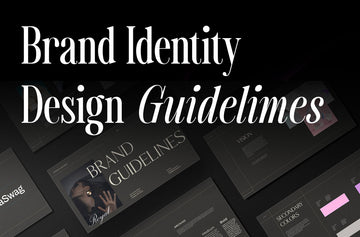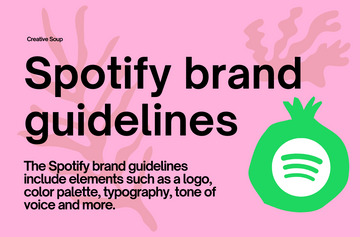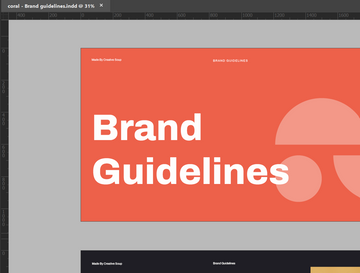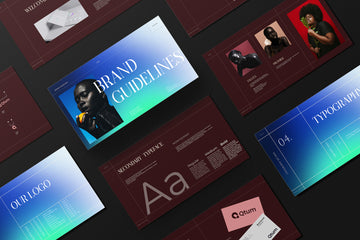Brand identity design plays a crucial role in establishing a memorable and recognizable image for a company or organization. It involves the strategic use of visual elements to convey the brand's values, personality, and message to the target audience. In this article, we will explore the key elements of brand identity design and provide guidelines on how to create and implement an effective brand identity. By following these guidelines, businesses can establish a strong visual identity that resonates with their audience and sets them apart from competitors.
Introduction
In today's competitive marketplace, building a strong brand is essential for business success. A well-crafted brand identity helps differentiate a company from its competitors, builds trust with customers, and creates a lasting impression. Brand identity design is the process of visually representing a brand's unique attributes through various design elements. This article aims to guide businesses in creating brand identity design guidelines that ensure consistency and coherence across all brand touchpoints.
Understanding Brand Identity Design
What is Brand Identity Design?
Brand identity design encompasses the visual aspects that define a brand. It includes the logo, typography, color palette, and visual style. These elements work together to communicate the brand's personality, values, and purpose. A well-designed brand identity helps establish an emotional connection with the target audience, making the brand more relatable and memorable.
Importance of Brand Identity Design

A strong brand identity serves as the foundation for brand recognition and recall. It helps consumers identify and differentiate a brand from its competitors. Consistency in brand identity design across all channels and touchpoints fosters trust and familiarity. A well-defined brand identity also enables businesses to effectively communicate their unique selling propositions and establish a consistent brand experience.
Key Elements of Brand Identity Design

A successful brand identity design incorporates several key elements that work together harmoniously. These elements include:
Logo Design
The logo is the visual centerpiece of a brand identity. It serves as a symbolic representation of the brand and should be instantly recognizable. A well-designed logo captures the essence of the brand and evokes the desired emotional response from the target audience.
Typography
Typography plays a vital role in brand identity design, as it sets the tone and personality of the brand. Choosing appropriate typefaces and creating typography guidelines ensures consistency across all brand communications. Typography should align with the brand's values and resonate with the intended audience.
Color Palette
Colors evoke emotions and have the power to convey meaning. A carefully selected color palette helps establish a brand's personality and enhances recognition. Brand identity guidelines should define the primary and secondary colors, as well as their usage across different applications.
Visual Style
The visual style encompasses the overall aesthetic and design elements used in brand communications. It includes imagery, illustrations, patterns, and other visual elements that contribute to the brand's visual language. Consistency in the visual style ensures a cohesive and recognizable brand identity.
Creating Brand Identity Design Guidelines
To create effective brand identity design guidelines, businesses should consider the following steps:
Defining Brand Values and Personality
Before designing the visual elements, it is essential to have a clear understanding of the brand's values, mission, and target audience. These insights will guide the design process and ensure that the brand identity accurately reflects the brand's essence.
Logo Usage Guidelines
Establishing guidelines for logo usage is crucial for maintaining consistency. This includes defining clear spacing requirements, minimum sizes for legibility, and rules for color variations and backgrounds. Guidelines should also cover situations where the logo appears alongside other logos or in different applications.
Typography Guidelines
Typography guidelines establish rules for font selection, hierarchy, and usage across different platforms. Defining primary and secondary typefaces, font sizes, and spacing guidelines ensures a cohesive typographic system that reflects the brand's personality.
Color Palette Guidelines
Clear guidelines on the usage of colors help maintain visual consistency. These guidelines should specify primary and secondary colors, provide color codes or values, and outline rules for background and text color combinations. Consistency in color usage strengthens brand recognition.
Visual Style Guidelines
Guidelines for the visual style ensure consistency in imagery, illustrations, and other visual elements. Defining the preferred visual aesthetics, image treatments, and illustration styles helps maintain a cohesive brand identity across various marketing materials and touchpoints.
Implementing Brand Identity Design Guidelines
Once the brand identity design guidelines are established, it is crucial to implement them consistently across all brand touchpoints. Here are some key areas where these guidelines should be applied:
Consistent Branding Across Channels
Consistency is key in building a strong brand identity. Apply the brand identity design guidelines consistently across all channels, including print materials, websites, social media profiles, and physical spaces. This ensures that the brand remains recognizable and cohesive.
Application in Marketing Materials
Brand identity design guidelines should be followed when creating marketing materials such as brochures, advertisements, and promotional items. Consistency in design elements, typography, and imagery helps reinforce the brand's identity and message.
Online Presence and Digital Assets
Maintaining a consistent brand identity in the digital realm is crucial. Apply the brand identity guidelines to websites, mobile apps, email templates, and social media profiles. Consistency in design, color usage, and typography across these digital assets helps strengthen brand recognition.
Employee Branding
Employees play a vital role in representing the brand. Educate employees about the brand identity design guidelines and encourage them to incorporate the guidelines in their communications, both internally and externally. Consistent application of the brand identity ensures a unified brand experience.
Maintaining and Evolving Brand Identity
A brand identity is not static but evolves over time. To ensure its relevance and effectiveness, businesses should consider the following:
Regular Brand Audits
Periodically review and assess the brand identity to ensure it aligns with the brand's evolving goals and market trends. Conduct brand audits to evaluate consistency, effectiveness, and relevance. Make necessary adjustments while staying true to the brand's core values.
Adapting to Market Trends
Stay informed about industry trends and changes in consumer preferences. While maintaining consistency, evaluate if certain design elements need updating to remain relevant. Adapting to market trends ensures that the brand identity continues to resonate with the target audience.
Evaluating Feedback and Consumer Perception
Listen to customer feedback and monitor how the brand identity is perceived by the target audience. Conduct surveys, analyze social media interactions, and gather feedback to understand how the brand identity influences consumer perception. Make adjustments based on these insights to strengthen the brand's image.
Conclusion
Creating and implementing brand identity design guidelines is crucial for establishing a strong visual identity that resonates with the target audience. By defining key elements such as logos, typography, color palette, and visual style, businesses can create a cohesive brand identity that differentiates them from competitors. Consistency in applying these guidelines across all channels and touchpoints ensures brand recognition and builds trust with customers. Regular evaluation and adaptation of the brand identity help maintain relevance and effectiveness in an ever-changing market.
FAQs
1. What is brand identity design? Brand identity design refers to the strategic use of visual elements, such as logos, typography, colors, and visual styles, to create a distinct and memorable brand image.
2. Why is brand identity design important? Brand identity design is important because it helps differentiate a brand, build trust with customers, and create a lasting impression. It communicates the brand's values, personality, and message to the target audience.
3. What are the key elements of brand identity design? The key elements of brand identity design include logo design, typography, color palette, and visual style. These elements work together to convey the brand's personality and create visual recognition.
4. How do you create brand identity design guidelines? To create brand identity design guidelines, you should define the brand's values and personality, establish guidelines for logo usage, typography, color palette, and visual style. These guidelines ensure consistency and coherence in brand communications.
5. How do you implement brand identity design guidelines? Brand identity design guidelines should be implemented consistently across all brand touchpoints. This includes maintaining consistent branding across channels, applying guidelines in marketing materials, online presence, and employee branding.
Note: The content provided is for informational purposes only and does not constitute legal, financial, or professional advice.






